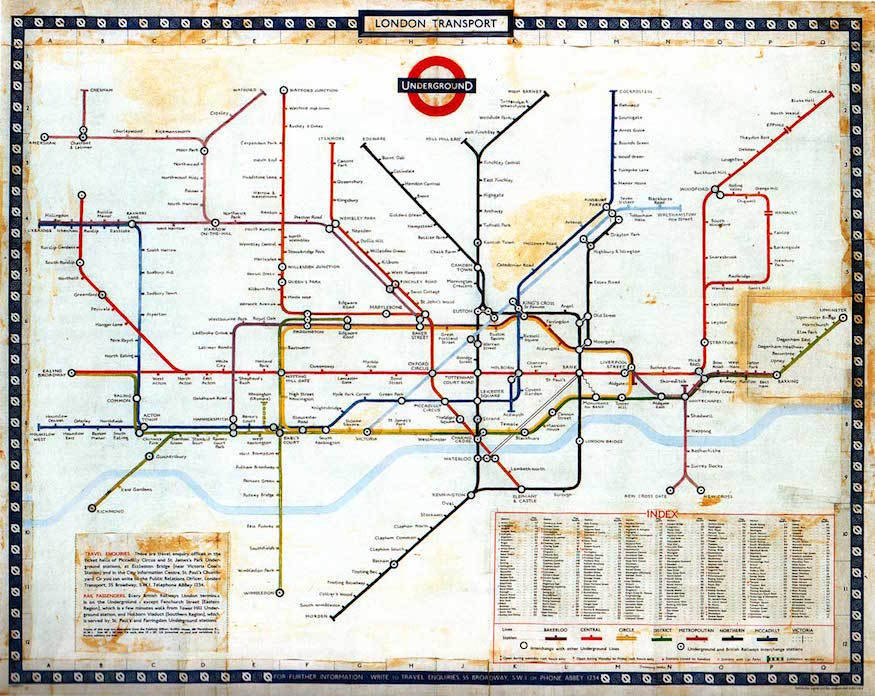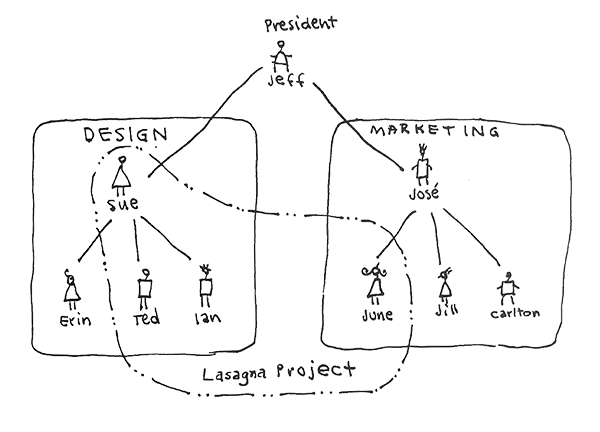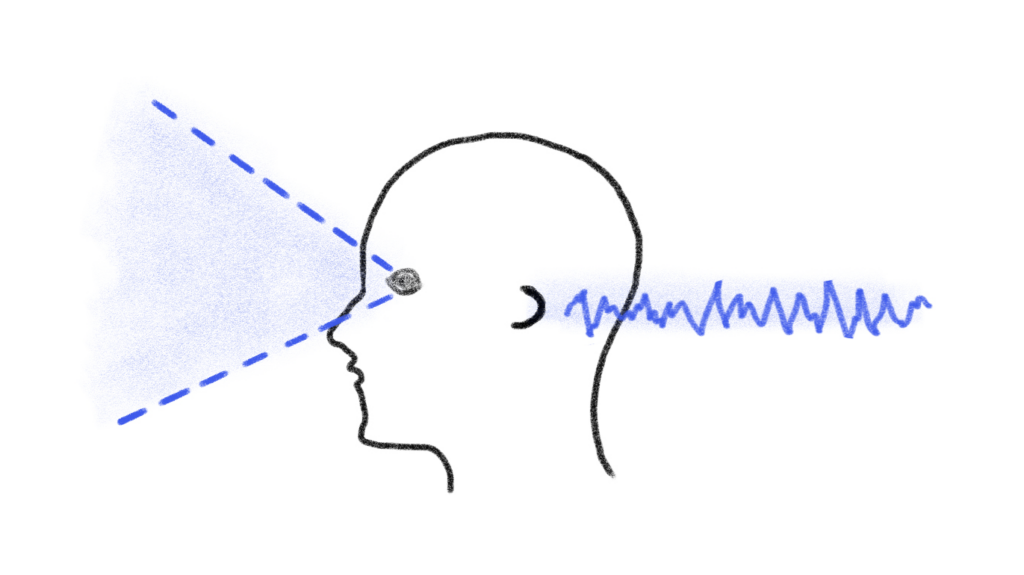Dual coding in accounting education
Summary: A simple way to embrace dual coding in accounting education is to use a concept map. This “almost certainly” improves learning. Don’t reinvent the wheel: there’s a free one that you can adapt, copy and distribute. Give credit to its creators.
This is the BaSIS Board. It combines words and images to explain accounting, a kind of “show-and-tell”. You can, of course, teach successfully without one, and many people do. It’s just that once you start using this, you’ll never go back. Ever.

It is provided by Wealthvox under Creative Commons BY-NC-SA.
Learning using words and images together is theorised by cognitive psychologists as “dual coding”. It’s one of the Six Strategies for Effective Learning recommended by The Learning Scientists, who provide evidence-based resources backed by decades of cognitive research. Like good scientists, they say, “with a fair amount of certainty”, dual coding improves learning.
For years, the best communicators in many fields have understood the benefits of dual coding.



Research shows that all students, regardless of their learning preferences, improve learning when taught with a combination of visual and verbal materials. However, we need to be clear about what this means.
What dual coding isn’t
Firstly, don’t confuse dual coding with “learning styles”, which suggests students learn better when taught in a way that matches their identified learning style. There are various models. One categorises visual, auditory, reading or kinaesthetic styles (VARK), while another describes activist, reflector, theorist, or pragmatist learning modes. Unfortunately, researchers have been unable to substantiate claims that this leads to improved learning. Instead, teaching to preferences may mislead students into feelings of knowledge rather than learning.
Secondly, don’t assume that including funky pictures and diagrams in your slides helps your students learn better. Research by Rozenblit and Keil indicates that vivid images may make your lessons more memorable but do not necessarily lead to greater understanding. They conclude that we’re good at explaining systems “on the fly” when a representation is in front of us. “But then, we may mistakenly assume that much of the information contained in the picture is actually stored in our heads”.
A model of working memory
Without knowing precisely how the mind works, we use models to describe processes that appear to be happening. A fairly dominant one is the multi-component concept of working memory (Baddeley & Hitch, 1974). It defines working memory as the processes that keep things in mind while we perform complex tasks, such as learning about new information.
Its relationship with long-term memory is poorly understood, but working memory depends on activating long-term memory.
The model assumes separate but interacting components capable of parallel processing:
- The central executive is a control system which directs attention, suppresses irrelevant information and controls the subsystems.
- The phonological loop registers and refreshes speech-like memory traces in real time.
- The visuospatial sketchpad constructs and stores visual and spatial information, including mental maps.
- The episodic buffer temporarily stores and binds information from the other components and interacts with information from perception and long-term memory.
Cognitive load theory
Our understanding of working memory suggests that it is a limited-capacity resource regarding how long we can concentrate and how much information we can handle before being overloaded. In this context, dual coding theory overlaps somewhat with Sweller’s cognitive load theory (CLT). Educators should avoid overloading working memory to maximise learning (Sweller, 1988).
Dual coding theory, however, goes much further.
Dual coding theory
Paivio (1971, quoted in Caviglioli, 2019) coined dual coding to describe his theory that learning improves when visual and verbal information is combined. A student accesses more working memory when the same information is presented in two different ways. Long-term memory is also boosted, as two connected memory traces are more robust than one.
Using different language to Baddeley & Hitch, Paivio describes two information channels that feed working memory independently but in tandem. Visual information is processed synchronously, simultaneously providing perceptions of details, relationships and the whole. Verbal information is processed sequentially and is more constrained and effortful.

The process of transferring information to long-term memory is called encoding. Dual coding occurs when double memory traces of verbal and visual information exist. Paivio’s research indicated that this dramatically aids the later retrieval of information from long-term memory back to working memory. Subsequent research has successfully replicated Paivio’s findings.
In his later work (1990, quoted in Caviglioli, 2019), Paivio concluded that dual coding also positively affected the ability to create meaning from information. This is most significant when trying to understand elaborate or complex concepts. Visual representations are better because they contain detailed and multi-layered information that can be efficiently processed (Larkin & Simon, 1987).
The structure of knowledge
Given the limited information-processing capacity of humans, the challenge for teachers and learners is how to deal with large amounts of knowledge. This problem was a primary concern of Frederick Reif (2010, quoted by Miller, 2018), professor of physics and education at Carnegie Mellon University. His answer, in part, was to ensure that knowledge is organised effectively.
. . . instructional efforts need to pay as much attention to the organization of acquired knowledge as to its content.
The BaSIS Board is a powerful tool for learning because it organises accounting knowledge in two important ways.
- It makes the structures of accounting knowledge explicit. That is, the accounting framework comprises elements that work in relation to each other.
- It can be used to show multiple levels of knowledge. Transactions and events impact accounts (e.g. cash, bank loan) and financial statement elements (e.g. assets, liabilities).
Francis Miller explains the importance of knowledge structures in a beautifully structured paper, Organising knowledge with multi-level content: making knowledge easier to understand, remember and communicate.
Keep to the dual coding rules
If you’re unsure where to start with the BaSIS Board, check out our free course, Fundamentals of Accounting. This is designed for UK teachers of Level 3 (ages 16–18), but the same approach is relevant for any introduction to accounting.
Alternatively, you may have ideas for creating your own concept maps and other visual representations. Bear in mind these rules recommended by Oliver Caviglioli in his book Dual coding with teachers:
- Simple line-drawn representations are more effective than complex pictures. Leave out unnecessary information.
- Relate visuals directly to the relevant learning outcomes. Dual coding is not about artistic expression or entertaining students.
- Introduce a complex visual incrementally, giving students time to study it and to process the relationships that it illustrates.
- Draw attention to the visual and its meaning. Provide spare but clear explanations to students about how it works.
- Build deeper layers of understanding by making visible the underlying conceptual relationships.
Summary
Novices experience cognitive overloading more often and more quickly than experienced learners. So, we cannot expect students to learn the same way we learn. They require fuller explanations, detailed instructions, models and examples of how things work, followed by practice.
Embracing dual coding in accounting education is, therefore, an effective way to improve attention and learning among your students.
Resources, references and further reading
Baddeley, A. D. & Hitch, G. (1974). Working memory. Psychology of Learning and Motivation, 8, pp 47-89. (Accessed: 28 February 2023).
Brown, P. C., Roediger, H. L. & McDaniel, M. A. (2014). Make it stick, the science of successful learning. London, UK: Belknap Press. Available at Amazon UK.
Caviglioli, O. (2019). Dual coding with teachers. Melton, UK: John Catt, Hodder Education.. Available at Amazon UK.
Larkin, J.H. & Simon, H.A. (1987), Why a diagram is (sometimes) worth ten thousand words. Cognitive Science, 11: 65-100. https://doi.org/10.1111/j.1551-6708.1987.tb00863.x
Miller, F. (2018) Organising knowledge with multi-level content: making knowledge easier to understand, remember and communicate. Available at: https://www.francismiller.com/organising-knowledge/ (Accessed: 12 March 2021).
Moyer, D. (2010). The napkin sketch workbook. Pittsburgh, US: ThoughtForm. Available at: https://www.blurb.co.uk/b/1892410-napkin-sketch-workbook (Accessed: 12 March 2021).
Rozenblit, L. & Keil, F. (2002), The misunderstood limits of folk science: an illusion of explanatory depth. Cognitive Science, 26: 521-562. https://doi.org/10.1207/s15516709cog2605_1
Sweller, J. (1988). Cognitive load during problem-solving: effects on learning. Cognitive Science, 12, p.257-285. https://doi.org/10.1207/s15516709cog1202_4
The Learning Scientists, https://www.learningscientists.org/
Weinstein, Y. & Sumeracki, M. A. (2019). Understanding how we learn: a visual guide. London, UK: David Fulton, Routledge. Available at Amazon UK (referral link pays a commission to the Learning Scientists at no additional cost to you).
© AccountingCafe.org
Part of the Pedagogy series
Join the Accounting Cafe community



